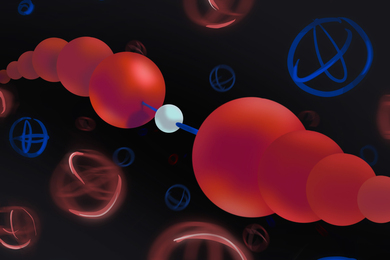MIT physicists believe they have identified a mysterious state of matter that has been linked to the phenomenon of high-temperature superconductivity.
Led by Eric Hudson, associate professor of physics, the researchers are exploring materials that conduct electricity with no resistance at temperatures around 30 degrees Kelvin above absolute zero. Such materials could have limitless applications if they could be made to superconduct at room temperature.
Hudson's team is focusing on the state of matter that exists at temperatures just above the temperature at which materials start to superconduct. This state, known as the pseudogap, is poorly understood, but physicists have long believed that characterizing the pseudogap is important to understanding superconductivity.
In their latest work, published online on July 6 in Nature Physics, they suggest that the pseudogap is not a precursor to superconductivity, as has been theorized, but a competing state.
If that is true, it could completely change the way physicists look at superconductivity, said Hudson.
"Now, if you want to explain high-temperature superconductivity and you believe the pseudogap is a precursor, you need to explain both. If it turns out that it is a competing state, you can instead focus more on superconductivity," he said.
The researchers studied several samples of a bismuth compound that superconducts at high temperatures. Each has a different level of doping (number of extra oxygen atoms that change the material's electrical properties), which influences both its superconducting and pseudogap properties.
"We've studied a variety of samples and found trends which point toward one possible identity, which is a charge-density wave," said Hudson.
Others have suggested that the pseudogap might be a charge-density wave, but this is the first systematic study of a "checkerboard" pattern, which appears when the material is imaged with scanning tunneling microscopy (STM) across a range of samples. The doping dependency of the checkerboard pattern offers strong evidence of a charge-density wave, Hudson said.
"If it is true that the pseudogap is a charge-density wave, that would be a major, major outcome because people have been looking for this for the past decade," he said.
Lead author of the paper is graduate student William Wise. Other MIT authors are graduate students Michael Boyer and Kamalesh Chatterjee, postdoctoral associate Yayu Wang, and former postdoctoral associate Takeshi Kondo.
The research was funded by the National Science Foundation and the Research Corporation.






